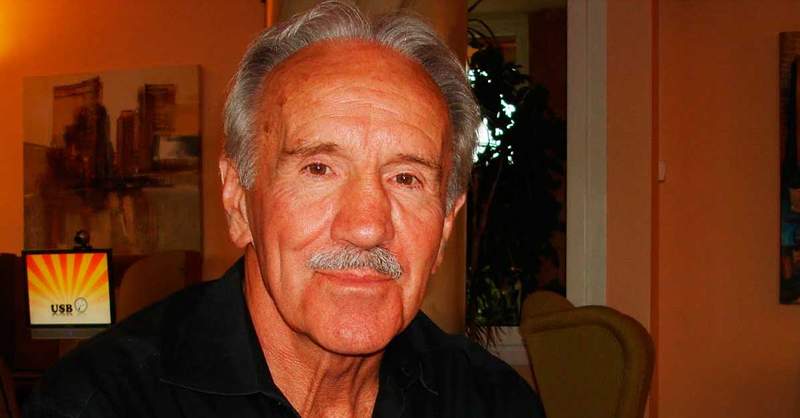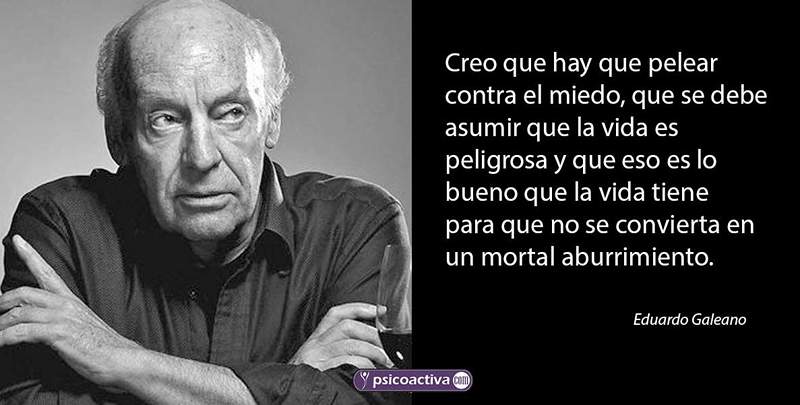Biography of John Grinder (1940)

- 3534
- 923
- Frederick Cormier
"Anything to which one resists, persists". John Grinder
"John Grinder's famous phrases"
The life of many people has improved thanks to the contributions of John Grinder, a prominent psychologist who has stood out in several academic areas. Grinder is recognized for his linguistics studies, but, above all, for having founded, together with Richard Bandler, Neurolinguistic programming, a personal and communication development model that has positively impacted the lives of millions of people.
Content
Toggle- Biography of John Grinder
- What is NLP
- A model that integrates several sources of inspiration
- John Grinder phrases
- Bibliography
Biography of John Grinder
John Grinder is a prominent psychologist and linguist, known for being one of the co-creators of neuro-linguistic programming (NLP), a methodology to model and change human behavior.
Grinder was born on January 10, 1940 in the United States. He graduated from the University of San Francisco with a degree in Psychology before obtaining his doctorate in linguistics at the University of California, San Diego.
After his doctorate, Grinder worked as an associate professor at the University of California, Santa Cruz. During his time there, he met Richard Bandler, a psychology student with whom he began working on gestalt therapy interventions. Together they developed neuro-linguistic programming in the early 1970s.
In addition to being a psychologist, Jon Grinder has highlighted as linguist, speaker and teacher.
Grinder and Bandler changed the study center and went to San Francisco, where they continued to develop their neurolinguistic programming technique. Among his works, those in the field of transformational generative grammar stand out, analyzing the work of the philosopher and linguist Noam Chomsky.
Among the experiences of Grinder also highlights having Formed part of the United States Armed Forces. During the Cold War he held the position of Captain, in Europe, where it is presumed that he became part of the American Intelligence Agency.
It was after this episode that returned to university and was a doctorate in linguistics. In this area, their contributions have been important in the field of study of the syntax, supporting, as mentioned, in Chomsky's theories. He also studied with George Miller, who founded the cognitive school. This led him to teach linguistics classes at the University of California. During this time He developed works such as the generative grammar guide and the phenomenon of suppression in English.
Grinder felt excited about the linguistic patterns that therapists used And that is why he decided to make an alliance with Bandler, to create a model in which the theory of generative grammar, the patterns of language used by Fritz Perls, founder of Gestalt therapy, and the postulates of the family therapist was integrated, and the postulates of the family therapist Virginia Satir, in addition to the clinical practice of renowned hypnotherapist Milton H. Erickson.
How Gestalt therapy works and what are its key concepts
What is NLP
Neuro-linguistic programming (NLP) is an approach to communication, personal development and psychotherapy created by Richard Bandler and John Grinder in the 1970s. Although it is not universally accepted within the scientific and medical community, it has found a place in areas such as therapy, business training and life coaching.
This approach is based on the idea that People can change their thoughts, behaviors and emotions by modeling the techniques and attitudes of successful individuals. Grinder and Bandler stated that their method could be used to deal with psychological problems, improve communication, promote personal development and increase efficacy in areas such as sales and leadership.
PNL postulates that there is a connection between neurological processes ("neuro"), language ("linguistics") and behavior patterns learned through experience ("programming") and that these can be changed to achieve specific goals in the life.
Some of NLP's central and technical concepts are the following:
- Modeling: This is the idea that the skills and behaviors of successful people can be copied or "modeling". Grinder and Bandler developed the NLP largely through the modeling of successful therapists such as Fritz Perls, Virginia Satir and Milton Erickson.
- Sensory representation: The NLP argues that we experience the world through our senses and create internal representations of these experiences in our mind. These representations can be visual, auditory, kinesthetic, olfactory or gustatory, and can influence our behavior.
- ANCORAJE: This is the process of associating an emotional response with a specific sensory stimulus. For example, listening to a particular song could trigger specific memories and emotions.
- Refusion: This is a technique that implies changing the way in which a situation is perceived to alter its meaning and, therefore, change the emotional and behavioral response towards it.
- Metamodel: Metamodel is a language technique used in NLP that aims to clarify communication and challenge and expand limitations in the understanding of an individual. It is based on transformational grammar ideas, a linguistics theory developed by Noam Chomsky.
- Model Model: It is a hypnotic language technique that is used to guide someone to an altered state of consciousness. It was modeled based on Milton Erickson's hypnosis style.
Although NLP has been criticized for the lack of scientific evidence that supports its statements, it has had a considerable influence in many fields, from therapy and coaching to sales and business training.
 50 phrases by Eduardo Galeano
50 phrases by Eduardo Galeano A model that integrates several sources of inspiration
John Grinder and Bandler created their model, Based on cognitive patterns, And they spread it through his work The structure of magic, patterns of Milton H hypnotic techniques. Erickson, and Changes in the family, texts that are the foundations of neurolinguistic programming.
Other important texts of Grinder, in which he deepens about his model, are of toads to princes, NLP, trance formations, refraint, precision model and turtles throughout the way.
Grinder is admired by the force of his character and how determined his personality is. In addition, he has a marked presence when he dictates conferences or teaches his talks as an instructor, which is why many companies and organizations call him to explain his methods.
There are those who consider that John Grinder is one of the great thinkers of the moment, Thanks to their creativity and intellect, which inspires millions of people around the world.
Among his works, there are fourteen books that They address transformational grammar issues, neurolinguistic programming and family therapy. Today, John Grinder dictates more than a thousand seminars a year and trains thousands of people from any nationality. More than twenty thousand people a year, to be inspired through their talks, attend their seminars and training. He has associated with Carmen Bostic, and work giving NLP training in different areas. Even companies like NASA have had the privilege of having it among its speakers.
Leadership test: Discover your leadership style
John Grinder phrases
Some of John Grinder's most interesting phrases are the following:
- “The tone and body language determine that the word Hello means simple recognition, a threat, a humiliation or a pleasant greeting."
- “The more precise and positively you can define what you want, and the more you program your brain to search and notice possibilities, the safer you will be to obtain what you want. Opportunities exist when they are recognized as such."
- “It's easy to feel depressed if you look down all the time down."
- “A few words well chosen and said at the right time they can transform the life of a person."
- “If you do what you have always done, you will get what you have always obtained. If what you are doing does not work, do something else."
- “The best way to change others is to change oneself, because we change relationships, others should also change."
- "A photograph is never the person. A bridge is not the trip. A musical score is not the sound. Magic does not exist, there are only magicians and what the public perceives."
Those who wish to know more about John Grinder's transformative model can approach the study of their works and receive part of their wisdom.
Refusion in NLP
Bibliography
- Bandler, r., Grinder, j., & Andreas, S. (1982). Neuro-Linguistic Programming ™ and the Transformation of Meaning. Utah: Real People.
- Bandler, r., & Grinder, J. (1975). The Structure of Magic (Vol. 1). Palo Alto, Ca: Science and Behavior Books.
- Grinder, j., & Postal, P. M. (1971). Missing Antecedents. Linguistic Inquiry, 269-312.

